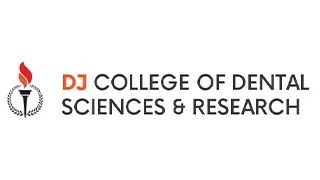Ahead of Print
HARNESSING DENTAL PULP STEM CELLS FOR ENDODONTIC PULP REGENERATION: CURRENT INSIGHTS & FUTURE DIRECTIONS
Authors: Syeda Asmar Saqib, Aaiman Liaqat, Muhammad Farrukh, Aqsa Mazhar, Muhammad Anas, Azhar Atta Muhammad
DOI: 10.18231/j.johs.12302.1759901789
Keywords: Tissue Engineering; Growth Factors; 3D Bioprinting; Scaffolds; Odontogenic Differentiation; Regenerative Endodontics ;Cell Homing; Dental Pulp Stem Cells (DPSCs)
Abstract: Dental pulp stem cells (DPSCs), found within both permanent and deciduous teeth, represent a unique source of ectodermally derived mesenchymal stem cells with notable proliferative ability, self-renewal, and multi-lineage differentiation (including osteogenic, adipogenic, chondrogenic, and neurogenic pathways). Notably, their neurovascular properties and the relatively non-invasive nature of their isolation distinguish DPSCs from other stem cell sources, such as bone marrow-derived MSCs. DPSCs have demonstrated superior odontogenic differentiation and are thus regarded as promising candidates for regenerating the dentin-pulp complex. Recent literature, including a systematic review of 35 studies from PubMed and Google Scholar (2000–present), highlights substantial progress in the application of DPSCs for regenerative endodontic. Growth factors such as BMPs, TGF-β1, and VEGF are critical in directing DPSC differentiation and facilitating pulp regeneration. Various isolation techniques both enzymatic and explant-based are under investigation, yet challenges remain, particularly regarding donor variability and effective cryopreservation. Tissue engineering approaches combining DPSCs with biomaterial scaffolds (collagen, hydroxyapatite-tricalcium phosphate, hydrogels) and signaling molecules have shown considerable promise. Preclinical studies in animal models (rat, dog, pig) confirm that DPSCs can generate vascularized pulp-like tissue and tubular dentin. While the regenerative potential of DPSCs extends into neurology and orthopedics, successful clinical translation faces several obstacles, including inconsistent isolation protocols, post-transplantation survival in hypoxic environments, immunogenicity concerns, and regulatory challenges. DPSCs represent a promising frontier in tissue engineering, with ongoing research poised to overcome current barriers and expand their therapeutic applications.
